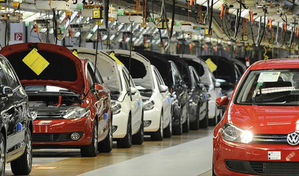New Delhi, 29 June (IANS). As India is getting closer to realizing the dream of the $ 5 trillion dollar, the automobile sector is emerging as a strong column of development by contributing about 7.1 percent of the country’s GDP and about 49 percent of the manufacturing GDP.
This sector in the country creates more than 3.7 crore job opportunities and contributes about 8 percent to India’s total exports.
More than only one commercial industry, the auto sector is now seen as a reflection of India’s growing power in global manufacturing and innovation.
By FY 2024-25, India is the third largest automobile market in the world in terms of sales and the fourth largest market in terms of production.
The country’s automobile industry produced more than 31 million vehicles in various segments. This included over 5 million passenger cars, 1 million commercial vehicles, 1 million three -wheelers and about 24 million two -wheelers.
In terms of exports, India exported about 5.7 million vehicles to markets such as Japan, Mexico, Latin America and Africa.
The government is also running several schemes to maintain and increase the growth rate of the automobile sector.
One of the most important plans is the production linked incentive (PLI) scheme. The budget of this scheme is Rs 25,938 crore. The scheme focuses on promoting electric vehicles (EV), hydrogen vehicles, and advanced vehicle technologies.
By the beginning of 2025, the scheme attracted investment proposals worth over Rs 67,000 crore.
This is expected to create an additional sales of Rs 2.3 lakh crore and 7.5 lakh direct employment.
Another major initiative is the Fame-II scheme, which has been launched with a budget of Rs 11,500 crore.
Through this scheme, the objective of the government is to support electric two -wheelers, three -wheelers, buses and taxis. More than 1.3 million EVs have already been supported under this scheme.
To reduce dependence on imported batteries, the government also launched a PLI scheme for the Advanced Chemistry Cell (ACC) battery storage with a outlay of Rs 18,100 crore.
Under this scheme, three companies are already working on making battery gigafactory. This scheme is quite important because batteries make more than 40 percent of EV’s total cost.
-IANS
ABS/




